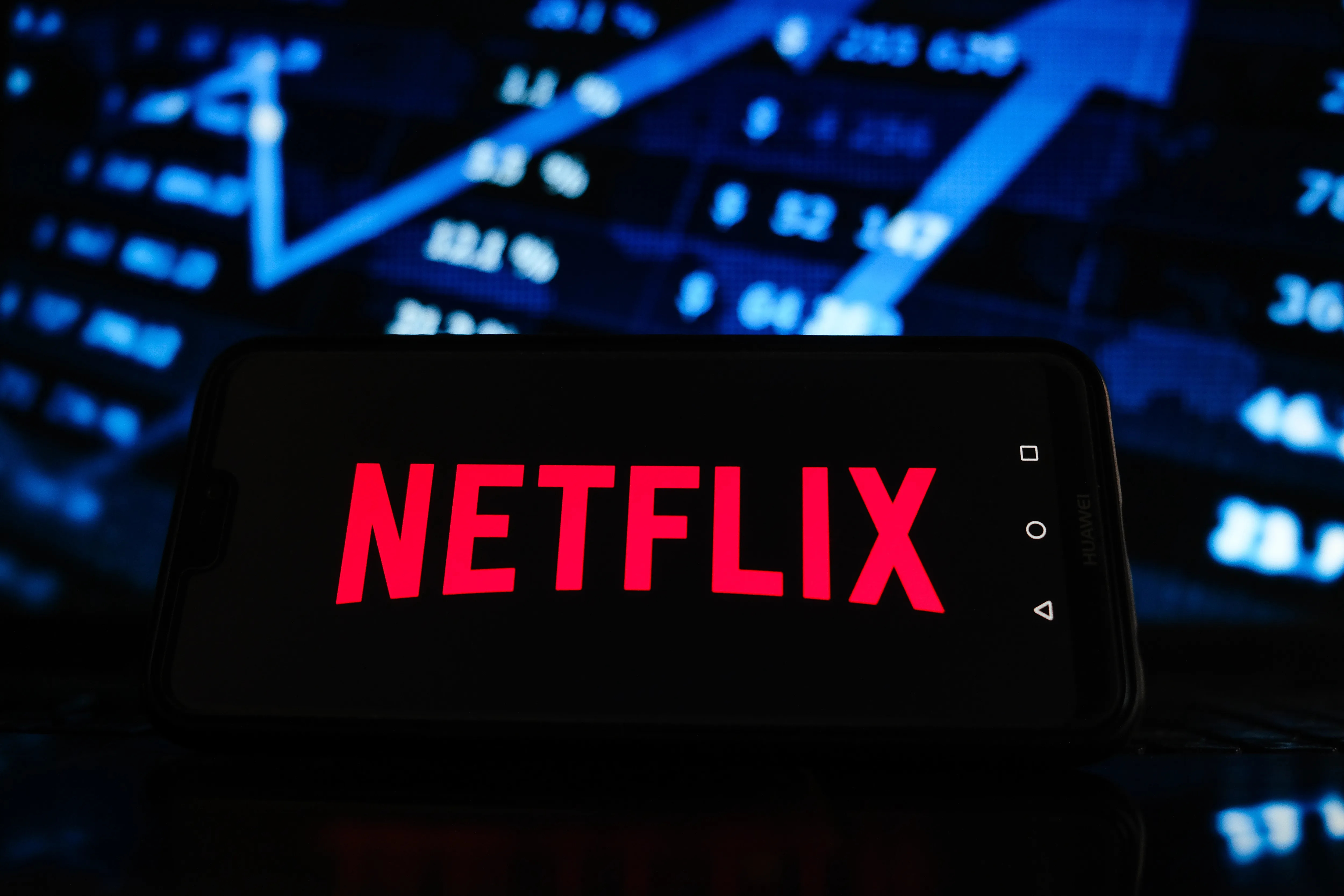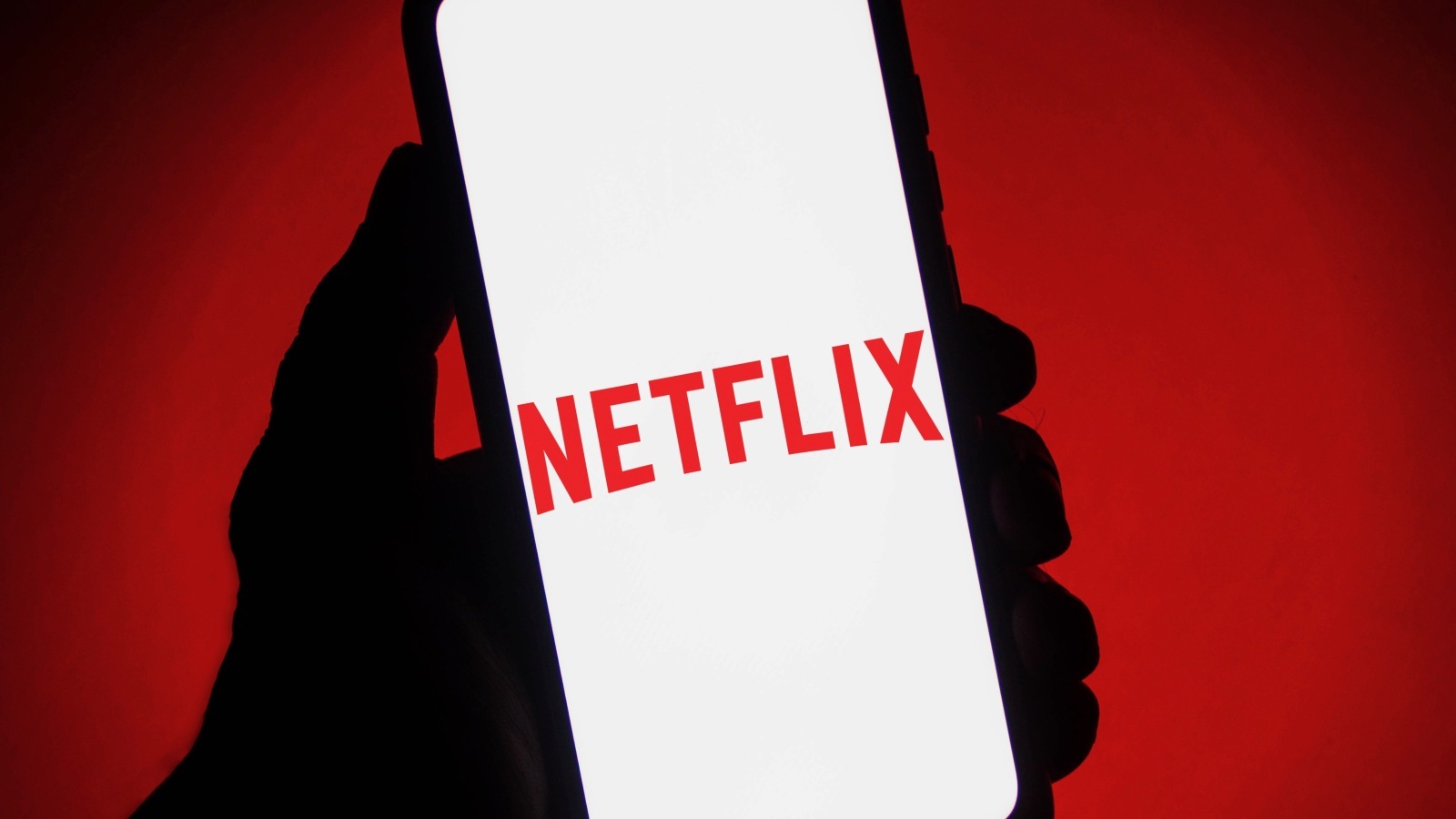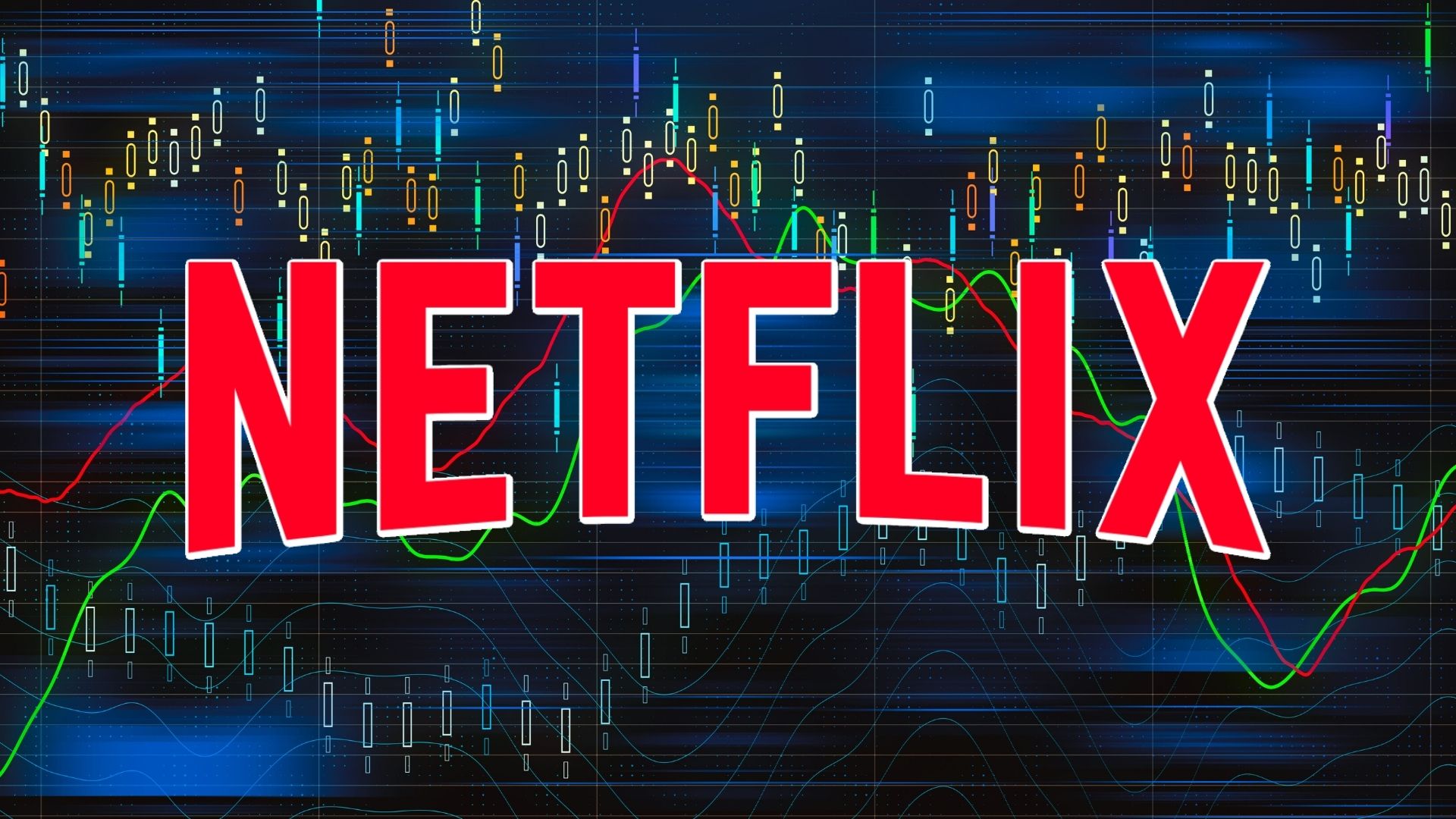Introduction
The streaming giant Netflix has experienced a decline in its stock price in recent times, triggering concerns among investors and analysts. While Netflix has maintained its position as a dominant player in the streaming industry for years, several factors have contributed to its stock being down.
The rapid growth in the streaming industry has paved the way for increased competition, with a multitude of players entering the market. This surge in competition has put pressure on Netflix to innovate and deliver engaging content to retain its subscriber base.
In addition to competition, a decrease in subscriber growth has also impacted Netflix’s stock performance. As the market becomes saturated and consumers have more options to choose from, Netflix has experienced challenges in attracting and retaining new subscribers.
Content-related concerns have also played a role in Netflix’s stock decline. While the company has been known for producing critically acclaimed original series and movies, there have been instances where certain content has failed to resonate with viewers. This has led to questions about Netflix’s ability to consistently deliver high-quality content that appeals to a wide audience.
Furthermore, rising production and licensing costs have taken a toll on Netflix’s financials. As the company continues to invest heavily in original programming and securing licensing rights for popular titles, its expenses have increased substantially. This has put pressure on the company’s profitability and affected investor sentiment.
The Impact of Competition in the Streaming Industry
The rise of various streaming platforms has significantly impacted Netflix’s stock performance. In recent years, companies like Amazon Prime Video, Hulu, Disney+, and Apple TV+ have entered the streaming market, intensifying the competition for viewership and subscribers. This increased level of competition has put pressure on Netflix to constantly innovate and offer unique content to attract and retain its audience.
With so many streaming options available, consumers now have a plethora of choices when it comes to their entertainment preferences. This has led to a fragmentation of viewership, as people are now dividing their time and attention among multiple platforms. As a result, Netflix has experienced challenges in maintaining steady growth in its subscriber base.
Furthermore, the new entrants in the streaming industry are investing heavily in original content, just like Netflix. This has created a situation where consumers have more options for high-quality shows and movies across different platforms. As a result, Netflix no longer holds a monopoly on exclusive and premium content, forcing the company to work harder to retain its market dominance.
Moreover, the competition has also resulted in a bidding war for popular titles and exclusive distribution rights. This has led to soaring production and licensing costs for all streaming platforms, including Netflix. In order to secure rights for engaging content, companies have had to pay exorbitant prices, which has impacted their financials. This increase in costs, combined with the need to invest in original programming, has put a strain on Netflix’s profitability and stock performance.
Despite these challenges, Netflix has shown resilience and has continued to invest heavily in original content to differentiate itself from the competition. By producing acclaimed series and movies like “Stranger Things” and “The Crown,” the company has managed to retain a loyal subscriber base. However, as the streaming industry becomes more crowded, Netflix will need to continually adapt and innovate to maintain its position as a leader in the market.
Decrease in Subscriber Growth
One of the key factors contributing to Netflix’s stock being down is the decrease in subscriber growth. While Netflix has enjoyed a substantial increase in its subscriber base in the past, the growth rate has started to slow down in recent years.
The primary reason for the decrease in subscriber growth is the saturation of the streaming market. With numerous streaming platforms now available to consumers, the competition for viewership has become fierce. This has resulted in a fragmentation of the audience, with viewers dividing their time and attention among different platforms.
Moreover, the high number of streaming options has also led to subscription fatigue among consumers. Many viewers are now subscribing to multiple streaming services, and the cumulative cost of these subscriptions can be burdensome. As a result, some individuals have opted to cancel or reduce their Netflix subscriptions, leading to a decline in new subscribers.
Additionally, regional expansion has also contributed to the decrease in subscriber growth. While Netflix has successfully expanded its operations to numerous countries worldwide, it has faced challenges in penetrating certain markets. Differences in cultural preferences, language barriers, and local competition have hindered the company’s ability to gain a significant foothold in certain regions, limiting its subscriber growth potential.
Furthermore, the impact of pricing strategy cannot be overlooked in the decline of subscriber growth. Netflix has implemented price increases over the years to cope with rising production and licensing costs. While these increases have helped offset expenses, they have also made the service less affordable for some consumers, prompting them to seek cheaper alternatives or cancel their subscriptions altogether.
To address the decrease in subscriber growth, Netflix has been focusing on producing compelling original content. By investing in popular series, movies, and documentaries, the company aims to attract new subscribers and retain existing ones. Additionally, Netflix has been expanding its international content library to cater to diverse audiences and better compete in local markets.
Overall, the decrease in subscriber growth can be attributed to various factors, including market saturation, subscription fatigue, regional challenges, and pricing strategies. To overcome these challenges, Netflix will need to continually adapt its offerings and ensure a strong value proposition to attract and retain subscribers in an increasingly competitive landscape.
Content-Related Concerns
Netflix has been renowned for its original content, producing hit shows and movies that have captured the attention of viewers worldwide. However, the streaming giant has also faced content-related concerns that have contributed to its stock being down.
One concern is the occasional inconsistency in the quality of original content. While Netflix has produced critically acclaimed series like “Stranger Things” and “The Crown,” there have been instances where certain shows or movies have failed to resonate with audiences. This has raised questions about the company’s ability to consistently deliver captivating content that appeals to a broad audience.
Another concern is the expiration of licensed content. Netflix has traditionally offered a mix of original and licensed content to cater to different tastes and preferences. However, as licensing agreements expire, popular titles may be removed from the platform, potentially leading to a decline in subscriber engagement. This concern is heightened as competing streaming services invest in securing exclusive licensing rights for popular shows and movies.
Additionally, the increasing emphasis on original content has resulted in a higher volume of content being produced by Netflix each year. While this may seem positive in terms of offering more choices to viewers, it also means that not all content receives the same level of marketing and promotion. Some shows or movies may get overshadowed, leading to missed opportunities in attracting viewership.
Furthermore, there is a growing demand for diverse and inclusive content in today’s entertainment landscape. While Netflix has made efforts to enhance representation and diversity in its offerings, some viewers and critics have expressed concerns about the underrepresentation or misrepresentation of certain communities or identities in its content.
To address these concerns, Netflix has been taking steps to improve its content strategy. The company has been investing in a wider range of genres and formats, aiming to cater to diverse audience preferences. It has also been working on building long-term relationships with talented creators and directors, ensuring a consistent flow of high-quality content.
Additionally, Netflix has been expanding its international content library to cater to global audiences and capitalize on the growing demand for foreign language content. By diversifying its content offerings, Netflix aims to strengthen its position in the streaming industry and appeal to a broader spectrum of viewers.
While content-related concerns have impacted Netflix’s stock performance, the company’s commitment to improving its content strategy and delivering engaging and diverse content will be critical in addressing these concerns and regaining investor confidence.
Rising Production and Licensing Costs
One of the factors contributing to Netflix’s stock being down is the significant rise in production and licensing costs. As the company focuses on producing compelling original content to maintain its competitive edge, it has had to allocate substantial resources to fund these endeavors.
Producing high-quality original content comes with a hefty price tag. Netflix has been investing billions of dollars annually in creating original shows, movies, and documentaries. This investment encompasses not only the production costs but also the fees paid to renowned directors, writers, and actors. The aim is to attract top talent and deliver captivating content that engages audiences.
In addition to production costs, licensing expenses have become an increasing burden for Netflix. Licensing agreements allow the company to offer a wide range of licensed content to its subscribers, supplementing its original programming. However, the cost of securing popular shows and movies from other studios or production companies has soared in recent years, as competition for exclusive rights intensifies.
Furthermore, as the streaming industry becomes more crowded, companies are vying for the same content, driving up the price of licensing. Streaming platforms are willing to pay a premium for compelling and highly sought-after titles, further amplifying the overall licensing costs for Netflix.
While investing in original content and securing licensing rights helps attract and retain subscribers, it is important to acknowledge that the rising costs associated with these endeavors impact the company’s financials. The substantial expenditure on production and licensing has put pressure on Netflix’s profitability and affected its stock performance.
To offset these increasing costs, Netflix has implemented price increases for its subscription plans. These adjustments have been necessary to maintain profitability as production and licensing expenses mount. However, relying solely on subscription price hikes is not a sustainable long-term solution, as it may result in subscriber churn or resistance from price-sensitive audiences.
To mitigate the impact of rising production and licensing costs, Netflix has been exploring different strategies. The company has been focusing on building long-term relationships with production companies and independent filmmakers to foster creative partnerships that are more cost-effective. Additionally, investing in global content has helped diversify its library and reduce reliance on expensive licensing deals.
While the rising production and licensing costs pose challenges for Netflix, the company’s ability to strike a balance between investing in high-quality content and managing expenses will be crucial in its efforts to regain investor confidence and drive sustainable growth.
The Effect of the COVID-19 Pandemic
The global COVID-19 pandemic has had a profound impact on many industries, including the streaming industry, and it has played a role in Netflix’s stock being down. While streaming services initially experienced a surge in demand as people stayed home during lockdowns, the long-term effects of the pandemic have presented challenges for Netflix.
One of the main challenges Netflix has faced is the disruption in content production. As a result of social distancing measures and restrictions on filming, many shows and movies had to halt production or delay release dates. This has created a gap in new content availability, affecting Netflix’s ability to attract and engage subscribers with fresh and anticipated releases.
Moreover, the pandemic has impacted consumer spending patterns and resulted in economic uncertainties. As a result, some viewers have been more cautious with their discretionary spending, including their streaming subscriptions. This has led to a slowdown in subscriber growth for Netflix, as consumers evaluate their entertainment options and prioritize their expenses.
The COVID-19 pandemic has also highlighted the importance of international markets for streaming platforms. With the closure of theaters and the increased demand for home entertainment, streaming services have witnessed a surge in global subscribers. However, each market presents its unique set of challenges, including regulatory requirements, competition, and cultural preferences. Navigating these complexities has been a key factor for Netflix’s performance during the pandemic.
On the positive side, the pandemic has accelerated the adoption of streaming as a primary source of entertainment. With people spending more time at home due to lockdowns and social distancing measures, there has been increased demand for streaming services, leading to higher engagement levels for Netflix. This increased usage has solidified the company’s position as a leading player in the streaming industry.
To adapt to the challenges posed by the pandemic, Netflix has focused on diversifying its content offerings by investing heavily in international and regional productions. By catering to diverse cultural preferences, the company aims to capture a larger audience and maintain its momentum in the global market.
Additionally, Netflix has implemented COVID-19 safety protocols to resume production and ensure the safety of its cast and crew members. By implementing rigorous testing, physical distancing measures, and adherence to local health guidelines, the company has worked to minimize production disruptions and deliver new content to subscribers.
While the ongoing impact of the pandemic presents uncertainties and challenges for Netflix, the company’s ability to adapt its content offerings and navigate international markets effectively will be crucial in driving its stock performance as the world gradually recovers from the pandemic’s effects.
Potential Regulatory Challenges
As Netflix continues to expand its global reach and influence in the streaming industry, it faces potential regulatory challenges that have an impact on its stock performance. Governments around the world are increasingly scrutinizing streaming services, which has led to the implementation of regulations that could affect Netflix’s operations.
One potential regulatory challenge is content censorship and classification. Different countries have varying regulations regarding what can be shown on streaming platforms, especially when it comes to sensitive or controversial topics. Netflix must navigate these regulations to comply with local laws while still providing a diverse range of content to its global subscriber base. Failure to comply with these regulations could result in fines, content restrictions, or even the suspension of operations in certain regions.
Another regulatory consideration is taxation. As Netflix operates in multiple countries, it is subject to different tax jurisdictions. Governments may impose additional taxes or regulations specific to streaming services, such as digital services taxes or content quotas. These additional financial obligations can impact the company’s profitability and stock performance.
Data privacy is another area in which Netflix faces potential regulatory challenges. As streaming platforms collect and store user data, there is an increasing focus on privacy regulations and data protection. Governments are implementing stricter measures to ensure that user data is handled securely and transparently. Non-compliance with these regulations could result in penalties and legal repercussions, negatively impacting Netflix’s reputation and stock performance.
Furthermore, competition regulations may also pose challenges for Netflix. Governments are increasingly concerned about the potential monopoly power held by dominant players in the streaming industry. Regulators may enforce antitrust laws to promote fair competition and prevent anti-competitive behavior. This could result in restrictions on Netflix’s business practices or required changes to its market strategies.
To address these potential regulatory challenges, Netflix has taken steps to collaborate and engage with regulators. The company has shown a willingness to work with governments and adapt its operations to comply with local regulations. Additionally, Netflix has invested in local content production, collaborating with regional creators and talent to comply with content quotas and cultural requirements set by different governments.
As the regulatory landscape evolves, Netflix will need to continue monitoring and adapting to changes in regulations to maintain its compliance and financial stability. By maintaining open lines of communication with regulators and demonstrating a commitment to responsible business practices, Netflix aims to navigate potential regulatory challenges and ensure its long-term success in the streaming industry.
Conclusion
The decline in Netflix’s stock can be attributed to various factors affecting the streaming industry and the company’s operations. The increasing competition in the streaming market, along with a decrease in subscriber growth, poses significant challenges for Netflix. Content-related concerns, rising production and licensing costs, the impact of the COVID-19 pandemic, and potential regulatory challenges have all contributed to the decline in Netflix’s stock performance.
To address these challenges, Netflix has been focusing on producing captivating original content, expanding its international content library, and adapting its strategies to diverse markets. The company has been resilient in the face of competition, continually investing in high-quality content to attract and retain subscribers.
Additionally, Netflix has taken steps to manage rising production and licensing costs by forming creative partnerships and diversifying its content offerings. The COVID-19 pandemic has presented both challenges and opportunities, as lockdowns initially increased demand but also disrupted content production and impacted consumer spending.
Regulatory challenges, such as content censorship, taxation, data privacy, and competition regulations, can impact Netflix’s operations and financial performance. To navigate these challenges, the company has been collaborating with regulators, ensuring compliance, and engaging in responsible business practices.
In conclusion, while Netflix faces various challenges and uncertainties, the company’s commitment to delivering compelling content, embracing global markets, and adapting to changing regulations positions it well for long-term success. As the streaming industry continues to evolve, Netflix’s ability to innovate, effectively manage costs, and navigate potential obstacles will be crucial in restoring investor confidence and driving future growth.

























